Mikroelektronika d.o.o.
eFuse 4 Click Board
eFuse 4 Click Board
Couldn't load pickup availability
Key Features:
- Reverse current blocking, DevSleep support for SSDs, wide operating voltage, programmable current limit, current monitoring, protection features, power-good and fault indicators, and more
- Based on the TPS25940 - eFuse power switch from Texas Instruments
- Can be used for systems with load-side holdup energy that must not drain back to a failed supply bus
- mikroBUS: I2C and GPIO Interfaces
Protect your circuits from faults with ease using the eFuse 4 Click Board™. Equipped with the powerful TPS25940 eFuse power switch from Texas Instruments, this board offers reverse current blocking and a full set of protection and monitoring functions. With a wide operating range of 2.7V to 18V, the eFuse 4 Click Board™ can handle popular DC bus voltages and includes a potentiometer for setting the overload and short-circuit current limit, as well as an external current monitoring header.
The eFuse 4 Click Board™ is easy to integrate into your system thanks to its mikroSDK compliant library and compatibility with the mikroBUS™ socket. It also comes fully tested and ready to use, providing you with peace of mind and reliable protection for your projects. Choose the eFuse 4 Click Board™ for a compact and powerful solution to safeguarding your circuits.
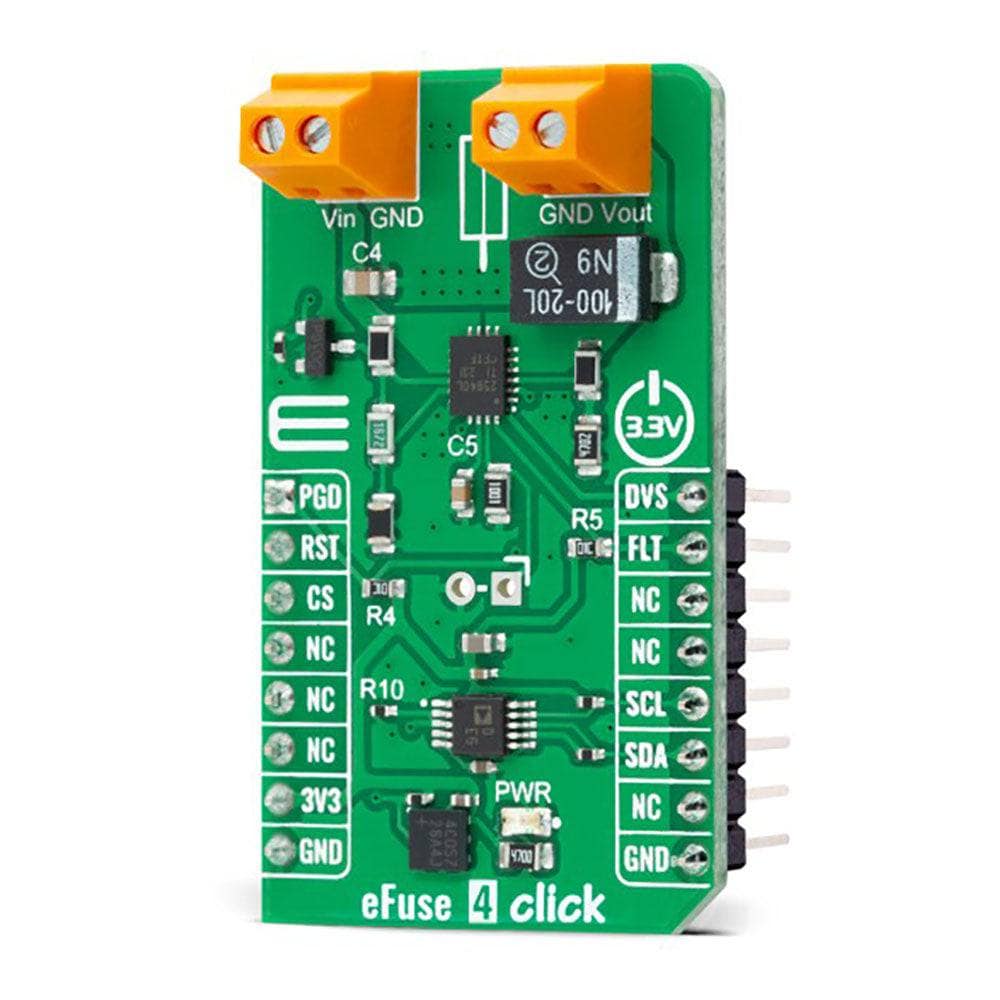
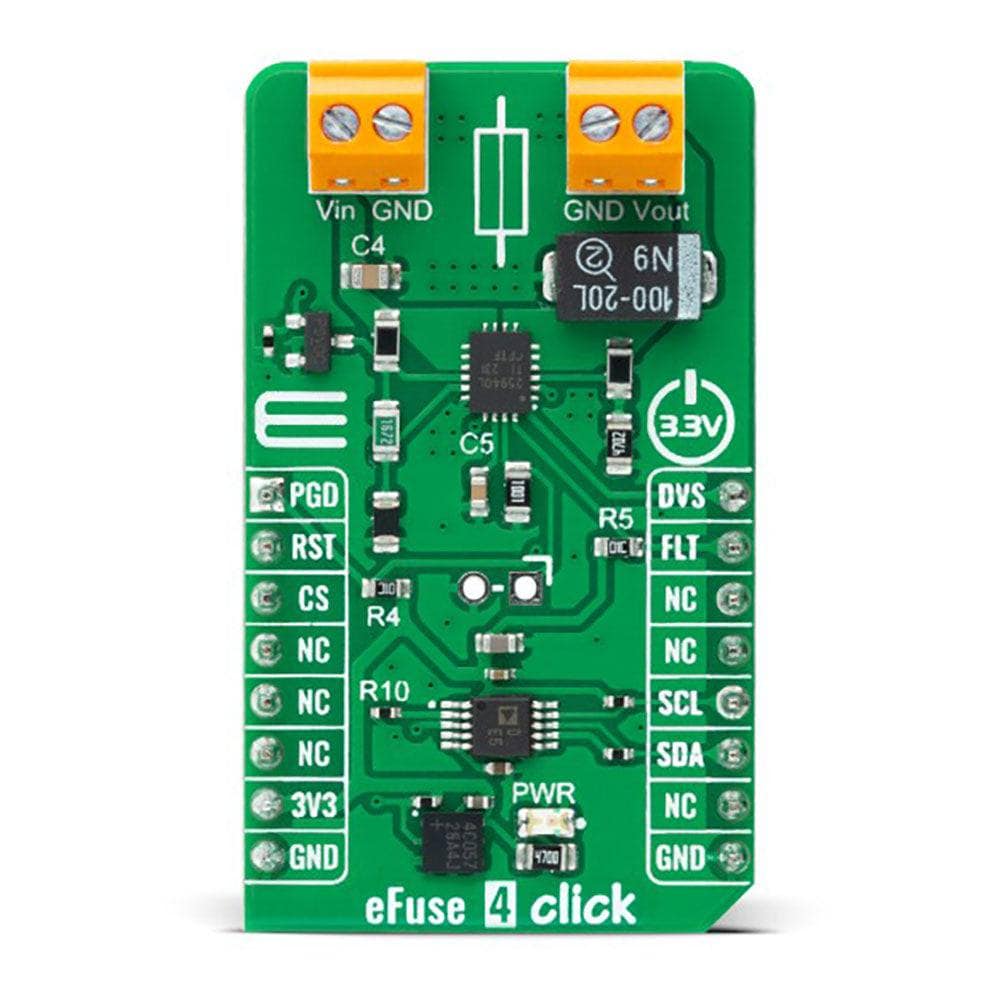
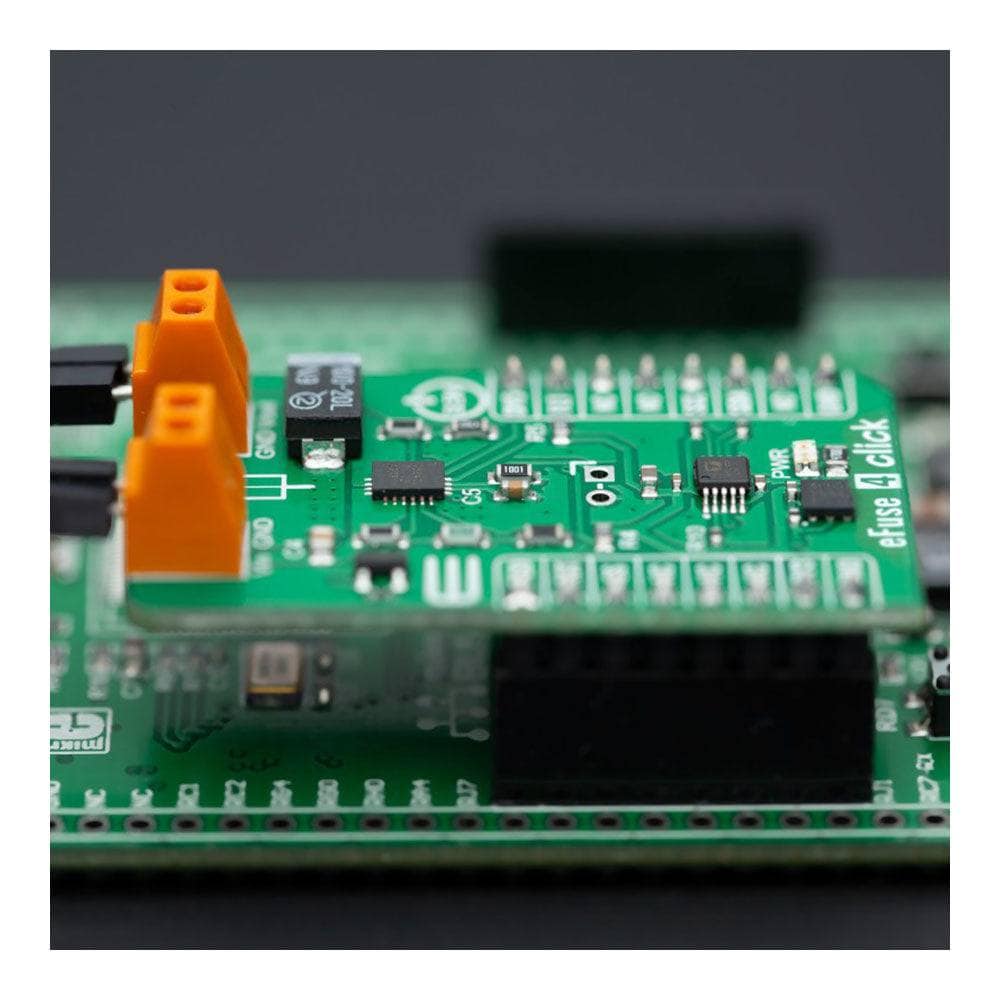
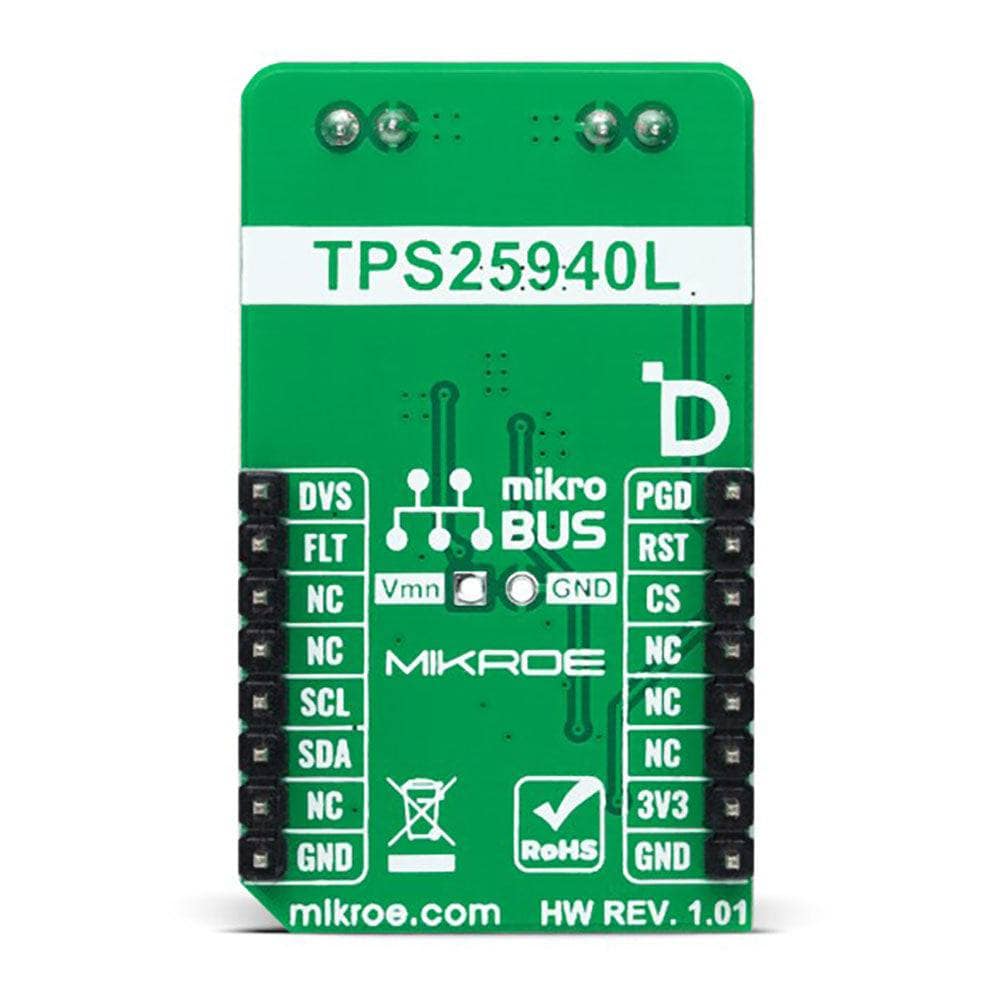
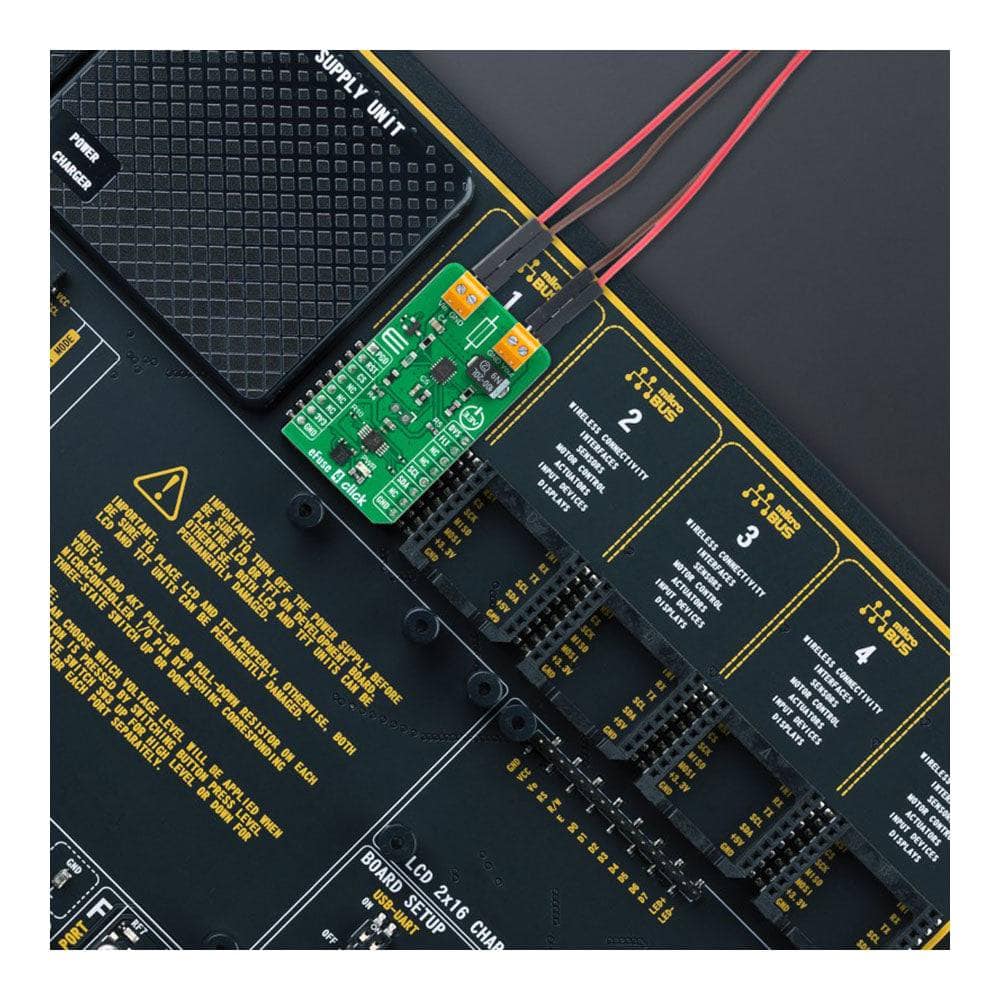
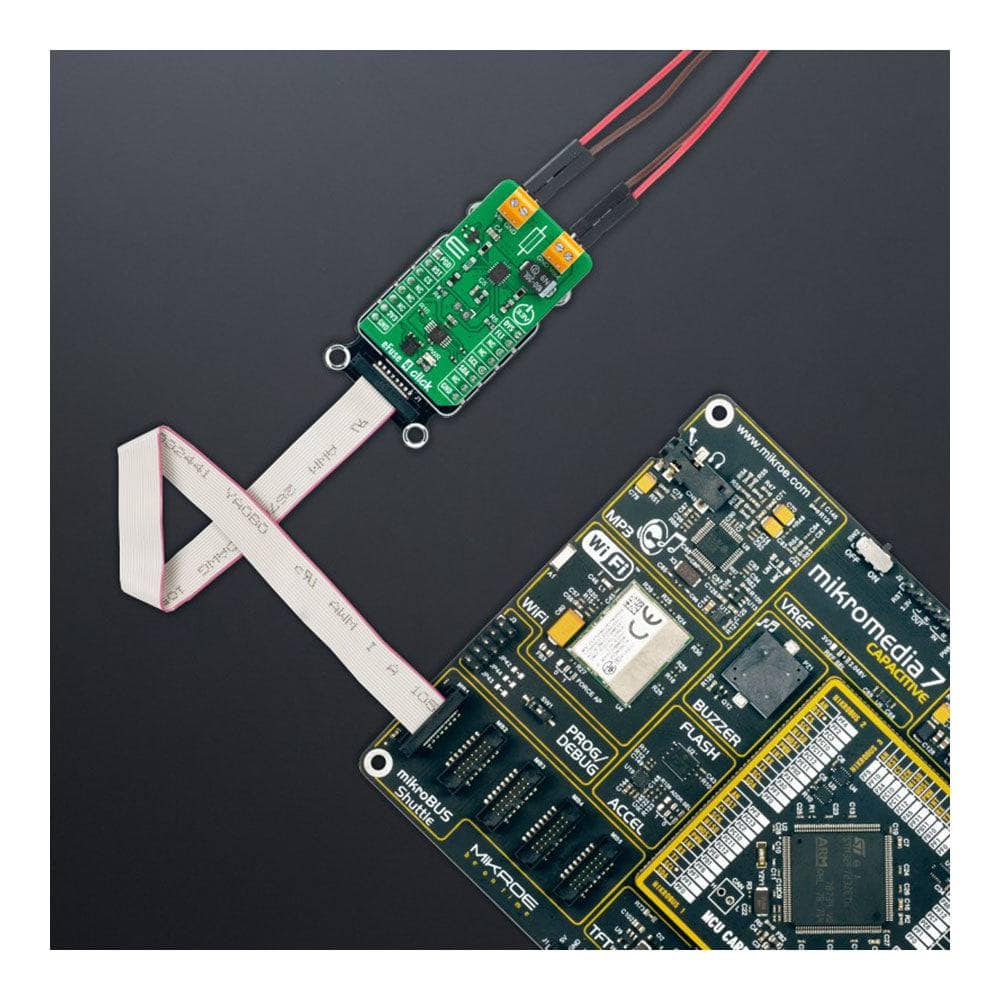
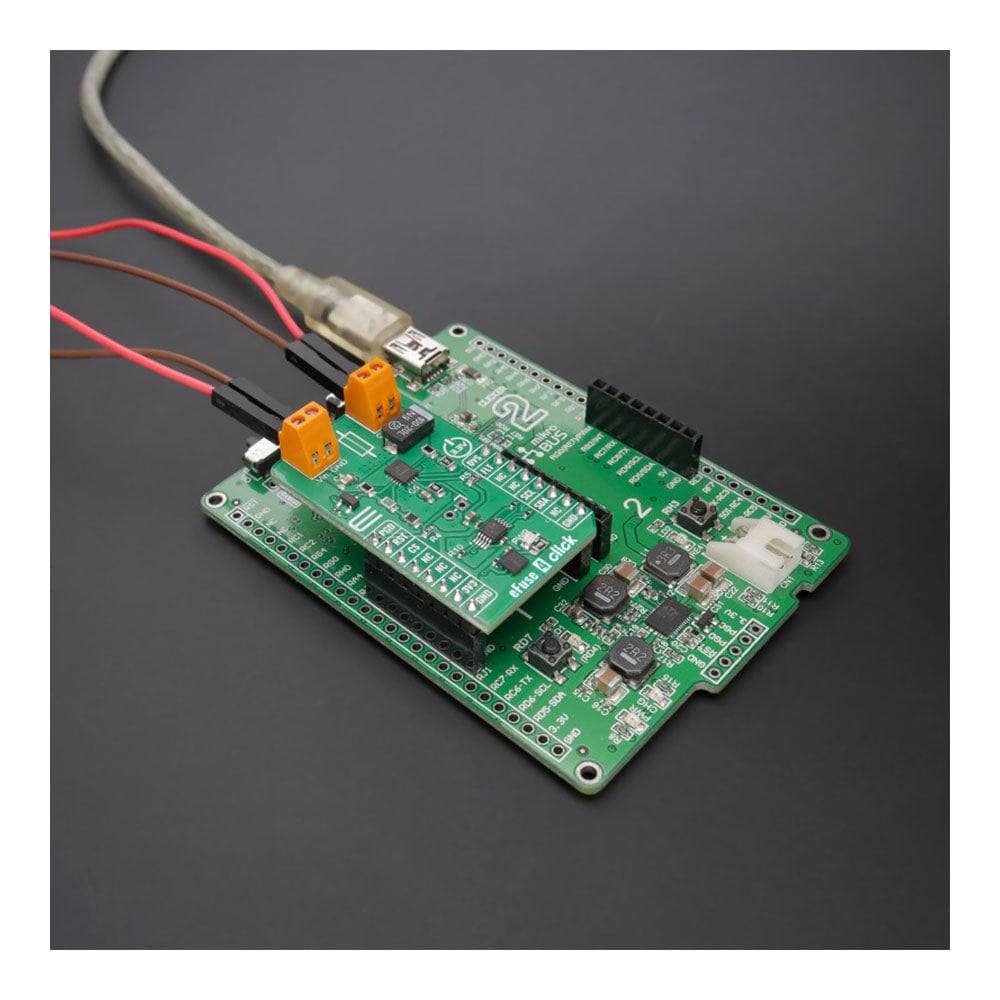
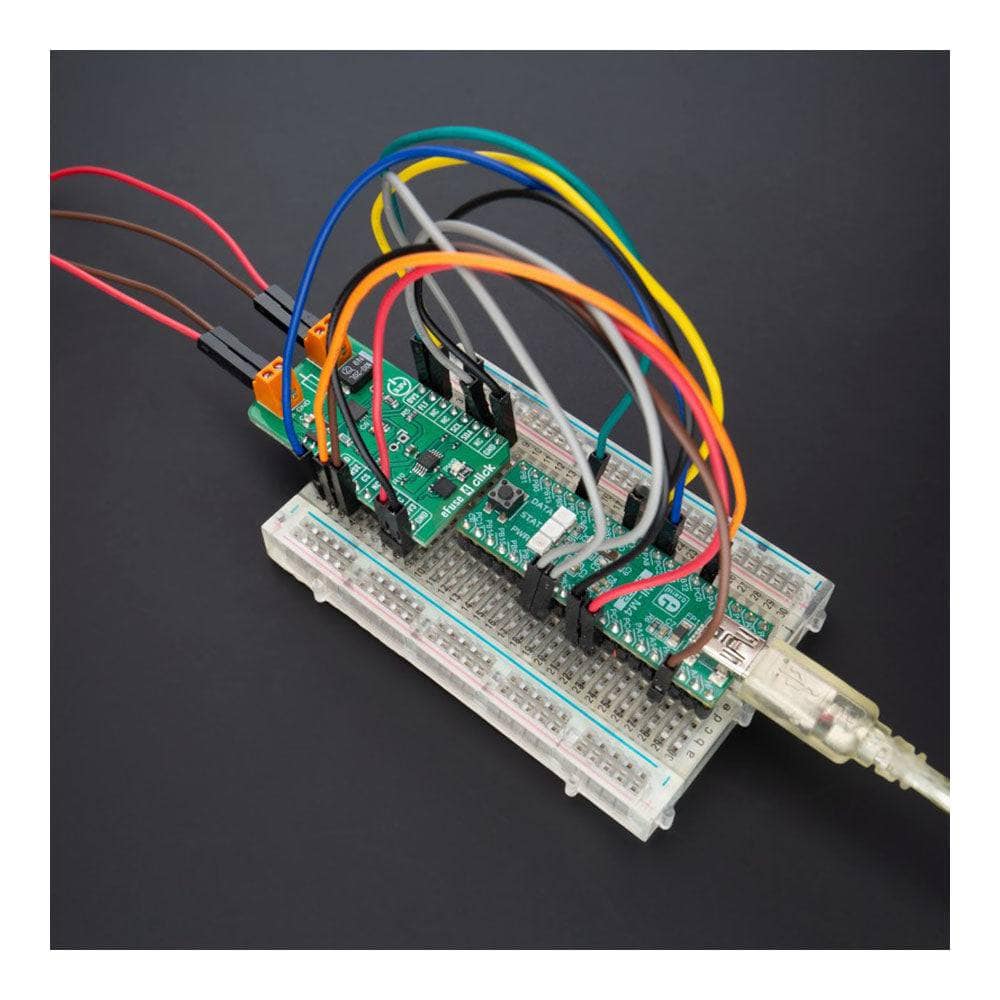
How Does The eFuse 4 Click Board™ Work?
The eFuse 4 Click Board™ is an advanced power protection solution that utilizes the TPS25940 smart eFuse from Texas Instruments. The TPS25940 integrates back-to-back FETs and advanced built-in protection circuitry to provide robust protection for systems and applications powered by an external power supply within the voltage range of 2.7V to 18V. It also offers a comprehensive set of protection and monitoring features, including a low-power DevSleep™ mode that can be controlled via the DVS pin on the PWM pin of the mikroBUS™ socket, allowing compliance with the SATA™ Device Sleep standard. This advanced protection and monitoring capabilities make eFuse 4 Click an ideal solution for safeguarding your systems from power-related issues.
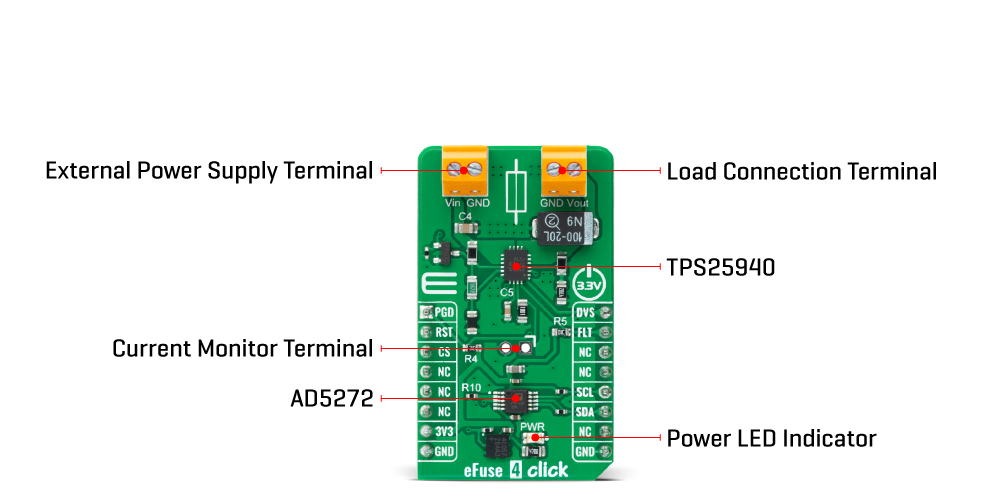
The eFuse 4 Click Board™ is designed to protect systems such as enterprise SSD drives against sudden power loss events. It monitors voltages of the input and output terminals to provide true reverse blocking from the output when a reverse condition or input power fail condition is detected. The TPS25940 allows users to program the overcurrent limit threshold between 1A and 5A via an external I2C-configurable digital potentiometer, the AD5272 from Analog Devices. Besides the overcurrent feature, the TPS25940 is also equipped with programmable over and undervoltage thresholds for load, source and device protection.
The TPS25940 also provides an additional power good comparator on the PGD pin, routed on the AN pin of the mikroBUS™ socket, with precision internal reference for output or any other rail voltage monitoring and a fault event indicator on the FLT pin. This fault indicator goes to a low logic state to indicate fault condition due to under/overvoltage, reverse voltage and thermal shutdown event in the event of an overcurrent. A special addition on the plate represents an unpopulated header which represents a precise current monitor output for health monitoring of the system, alongside Enable pin routed on the RST pin of the mikroBUS™ socket that controls the ON/OFF state of the internal TPS25940's FETs.
The eFuse 4 Click Board™ can be operated only with a 3.3V logic voltage level. The board must perform appropriate logic voltage level conversion before using MCUs with different logic levels. However, the Click board™ comes equipped with a library containing functions and an example code that can be used as a reference for further development.
SPECIFICATIONS
| Type | Power Switch |
| Applications | Can be used for systems with load-side holdup energy that must not drain back to a failed supply bus |
| On-board modules | TPS25940 - eFuse power switch from Texas Instruments |
| Key Features | Reverse current blocking, DevSleep support for SSDs, wide operating voltage, programmable current limit, current monitoring, protection features, power-good and fault indicators, and more |
| Interface | GPIO,I2C |
| Compatibility | mikroBUS |
| Click board size | M (42.9 x 25.4 mm) |
| Input Voltage | 3.3V |
PINOUT DIAGRAM
This table shows how the pinout of the eFuse 4 Click Board™ corresponds to the pinout on the mikroBUS™ socket (the latter shown in the two middle columns).
| Notes | Pin |  |
Pin | Notes | |||
|---|---|---|---|---|---|---|---|
| Power Good Indicator | PGD | 1 | AN | PWM | 16 | DVS | DevSleep Mode |
| Reset | RST | 2 | RST | INT | 15 | FLT | Fault Indicator |
| NC | 3 | CS | RX | 14 | NC | ||
| NC | 4 | SCK | TX | 13 | NC | ||
| NC | 5 | MISO | SCL | 12 | SCL | I2C Clock | |
| NC | 6 | MOSI | SDA | 11 | SDA | I2C Data | |
| Power Supply | 3.3V | 7 | 3.3V | 5V | 10 | NC | |
| Ground | GND | 8 | GND | GND | 9 | GND | Ground |
ONBOARD SETTINGS AND INDICATORS
| Label | Name | Default | Description |
|---|---|---|---|
| LD1 | PWR | - | Power LED Indicator |
| J1 | - | Unpopulated | Current Monitor Header |
EFUSE 4 CLICK ELECTRICAL SPECIFICATIONS
| Description | Min | Typ | Max | Unit |
|---|---|---|---|---|
| Supply Voltage | - | 3.3 | - | V |
| External Power Supply | 2.7 | - | 18 | V |
| Output Current | 1 | - | 5 | A |
Software Support
We provide a library for the eFuse 4 Click Board™ as well as a demo application (example), developed using MikroElektronika compilers. The demo can run on all the main MikroElektronika development boards.
The package can be downloaded/installed directly from NECTO Studio The package Manager (recommended), downloaded from our LibStock™ or found on MikroE Github account.
Library Description
This library contains API for the eFuse 4 Click Board™ driver.
Key functions
-
efuse4_set_current_limiteFuse 4 set current limit function. -
efuse4_set_resistanceeFuse 4 set resistance function. -
efuse4_set_digi_poteFuse 4 set normal mode function.
Example Description
This library contains API for the eFuse 4 Click Board™. This driver provides the functions to set the current limiting conditions in order to provide the threshold of the fault conditions.
void application_task ( void )
{
static char index;
if ( EFUSE4_ERROR != log_read( &logger, &index, 1 ) )
{
if ( ( index >= '0' ) && ( index <= '6' ) )
{
efuse4_set_current_limit ( &efuse4, limit_value_op[ index - 48 ] );
log_printf( &logger, " >>> Selected mode %d rn", index - 48 );
log_printf( &logger, " Current limit is %d mA rn", limit_value_op[ index - 48 ] );
log_printf( &logger, "---------------------------rn" );
Delay_ms( 100 );
}
else
{
log_printf( &logger, " Data not in range! rn" );
log_printf( &logger, "---------------------------rn" );
display_selection( );
Delay_ms( 100 );
}
}
}
The full application code, and ready to use projects can be installed directly from NECTO Studio The package Manager (recommended), downloaded from our LibStock™ or found on MikroE Github account.
Other MikroE Libraries used in the example:
- MikroSDK.Board
- MikroSDK.Log
- Click.eFuse4
Additional Notes and Information
Depending on the development board you are using, you may need USB UART Click Board™, USB UART 2 Click or RS232 Click to connect to your PC, for development systems with no UART to USB interface available on the board. UART terminal is available in all MikroElektronika compilers.
MIKROSDK
The eFuse 4 Click Board™ is supported with mikroSDK - MikroElektronika Software Development Kit. To ensure proper operation of mikroSDK compliant Click board™ demo applications, mikroSDK should be downloaded from the LibStock and installed for the compiler you are using.
eFuse 4 Click Board
Frequently Asked Questions
Have a Question?
Be the first to ask a question about this.








